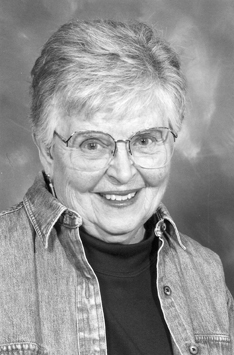Rabbitbrush Rambler: Ag education

Although I have always been a town-dweller, I learn a lot by reading articles in the Courier about urban gardening projects in our local schools and communities and also the interesting articles written by our extension agents. I loved reading the SLV 2017 Fair Results with the names of all the winners and entrants, advertisers and lists of supporters. But a sage might have said years ago that the San Luis Valley needed a whole college to assist farmers and ranchers in staying up to date with their work.
Some lucky high school graduates from the Valley managed to go to the Colorado Agricultural College at Fort Collins, but others stayed home on the farm by necessity, doing things pretty much in tried-and-true ways while trying to raise their crops and livestock successfully. The establishment of the San Luis Valley Research Center in 1888 was a step forward but worked mainly on potatoes at that time.
Colorado Agricultural College, as Colorado State University became called eventually, was one of the land-grant schools that followed enactment of the Morrill Act in 1862, the same year when the Homestead Act was passed by Congress. After Colorado became a state, it established the agricultural college in 1878 because the need for agricultural education existed.
Today, more than a century later, ASU is offering a degree program with a concentration in biology and business. Students can study courses in “Soil & Crop Science, Horticulture, Weed and Pest Management, Irrigation, Water Conservation, and Greenhouse Management,” and take some CSU courses online. This is an important step forward that was a long time coming for farmers and ranchers.
Now I’m going to jump across the Continental Divide to Fort Lewis for a story that misfired badly. This one starts at Camp Lewis with a U.S. Army outpost that was established in 1878 at Pagosa Springs. Between San Juan mining activity, increased ranching by settlers on the Western Slope, and edgy relations with Ute Indians, the need for a military presence was apparent, and then the Meeker Massacre of 1879 in northwestern Colorado brought about dramatic rearrangements for Ute Indians.
Associated with that event, the U.S. Army moved in 1880 from Pagosa Springs to its new installation, Fort Lewis, a little south of Hesperus and west of Durango. Fort Lewis operated there until 1891, when the fort was deactivated and its property was taken over by the Interior Department for operation by the Bureau of Indian Affairs as one of its boarding schools. Such schools were supposed to expedite assimilation and transform Indians into farmers, like it or not.
The heritage of Ute Indians for centuries in pre-reservation times had been as nomadic hunters and gatherers, not agrarians as the settlers were. Fort Lewis Indian School’s homesick students, at one time numbering more than 300, had been corralled chiefly on the Southern Ute Indian Reservation (Ignacio), the Ute Mountain Ute Indian Reservation (Towaoc), and White Mesa in southeastern Utah (near Blanding). In its last couple of years of operation, the school focused on training high school Indian boys in agricultural and mechanical arts, until 1911 when the property and its land were transferred from the Bureau of Indian Affairs to the State of Colorado.
Beginning in 1911 the state operated the former Indian school near Hesperus for white and Indian students, with its administration still being at Fort Collins. The San Juan Basin Research Center opened at Hesperus in 1921, but the high school was expanding into a two-year state college that evolved into a four- year with its new campus at Durango. During that time Fort Lewis’s curriculum had been changing to fill its area’s opportunities and needs, so today it does not offer an agriculture program. The awkward administrative link with CSU ended in 2002.
Meanwhile, for more than a century and a half, the San Luis Valley’s life had been primarily agricultural but lacked a formal academic program for its farmers and ranchers. Bear in mind the fact that the number of agricultural jobs in the SLV still is exceeded only by those in government.
ASU at last is recognizing an opportunity and need that had been largely unmet for all those decades. Bravo!



